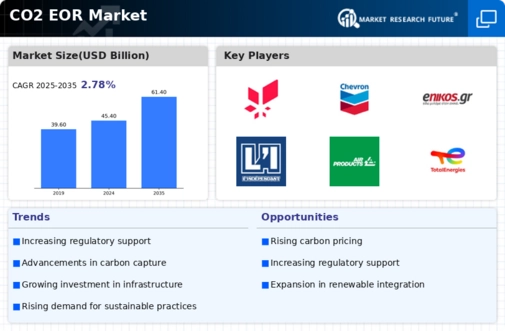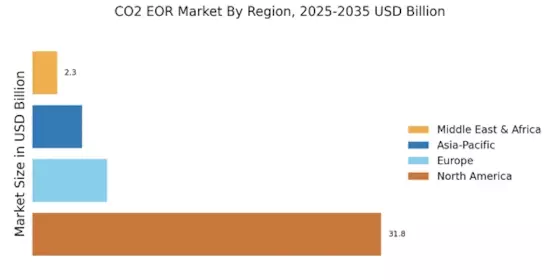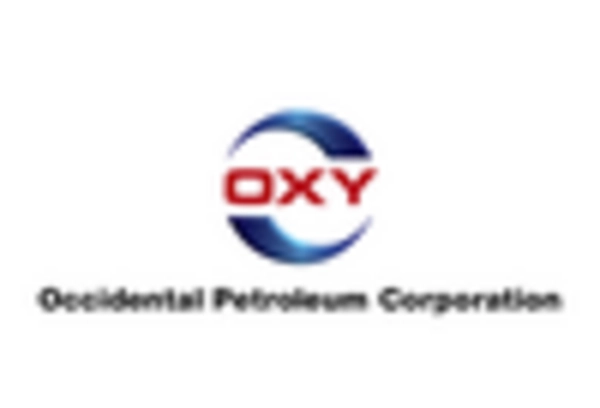Government Incentives and Policies
Government incentives and policies are pivotal drivers in the CO2 EOR Market. Many countries are implementing tax credits, subsidies, and grants to encourage the adoption of carbon capture and storage technologies, including CO2 EOR. For instance, the implementation of carbon pricing mechanisms has made CO2 EOR more economically attractive, as it allows operators to offset costs associated with carbon emissions. This regulatory support is expected to enhance investment in CO2 EOR projects, with projections indicating that the market could witness a compound annual growth rate of over 5% in the coming years. Such policies not only stimulate economic growth but also align with global climate goals, making CO2 EOR a strategic focus for energy transition.
Growing Focus on Carbon Neutrality
The growing focus on carbon neutrality is a significant driver for the CO2 EOR Market. As nations commit to reducing greenhouse gas emissions, CO2 EOR presents a practical solution for achieving these targets. By utilizing captured CO2 for enhanced oil recovery, the industry not only contributes to oil production but also aids in carbon sequestration efforts. This dual benefit aligns with sustainability goals, making CO2 EOR an attractive option for energy companies. Market analyses suggest that the CO2 EOR Market could expand rapidly, with an anticipated increase in projects aimed at integrating carbon management strategies. This trend reflects a broader shift towards sustainable practices in the energy sector.
Rising Oil Prices and Economic Viability
Rising oil prices are enhancing the economic viability of the CO2 EOR Market. As crude oil prices fluctuate, the profitability of enhanced oil recovery methods becomes more pronounced. Higher oil prices can justify the initial investment in CO2 EOR technologies, making them more appealing to operators. Recent trends indicate that when oil prices exceed USD 60 per barrel, CO2 EOR projects become increasingly feasible, leading to a surge in project approvals and investments. This economic dynamic is likely to drive the CO2 EOR Market forward, as operators seek to maximize returns on investment while ensuring sustainable production practices.
Technological Innovations in CO2 Capture
Technological innovations in CO2 capture are significantly influencing the CO2 EOR Market. Advances in carbon capture technologies, such as improved absorption and membrane separation techniques, are enhancing the efficiency of CO2 extraction and injection processes. These innovations are expected to reduce operational costs and increase the feasibility of CO2 EOR projects. The market is witnessing a shift towards more efficient and cost-effective solutions, with research indicating that new technologies could lower capture costs by up to 30% by 2030. As a result, the CO2 EOR Market is likely to attract more investments, fostering a competitive landscape that encourages further advancements and adoption of cutting-edge technologies.
Increasing Demand for Enhanced Oil Recovery
The CO2 EOR Market is experiencing a notable surge in demand for enhanced oil recovery techniques. As conventional oil reserves deplete, operators are increasingly turning to CO2 EOR as a viable solution to maximize extraction from existing fields. This method has been shown to improve recovery rates by 10 to 20 percent compared to traditional methods. The rising global energy demand, coupled with the need for efficient resource utilization, propels the adoption of CO2 EOR technologies. Furthermore, the CO2 EOR Market is projected to grow significantly, with estimates suggesting a market value exceeding USD 40 billion by 2027. This growth is indicative of the industry's potential to play a crucial role in meeting energy needs while addressing environmental concerns.



















Leave a Comment